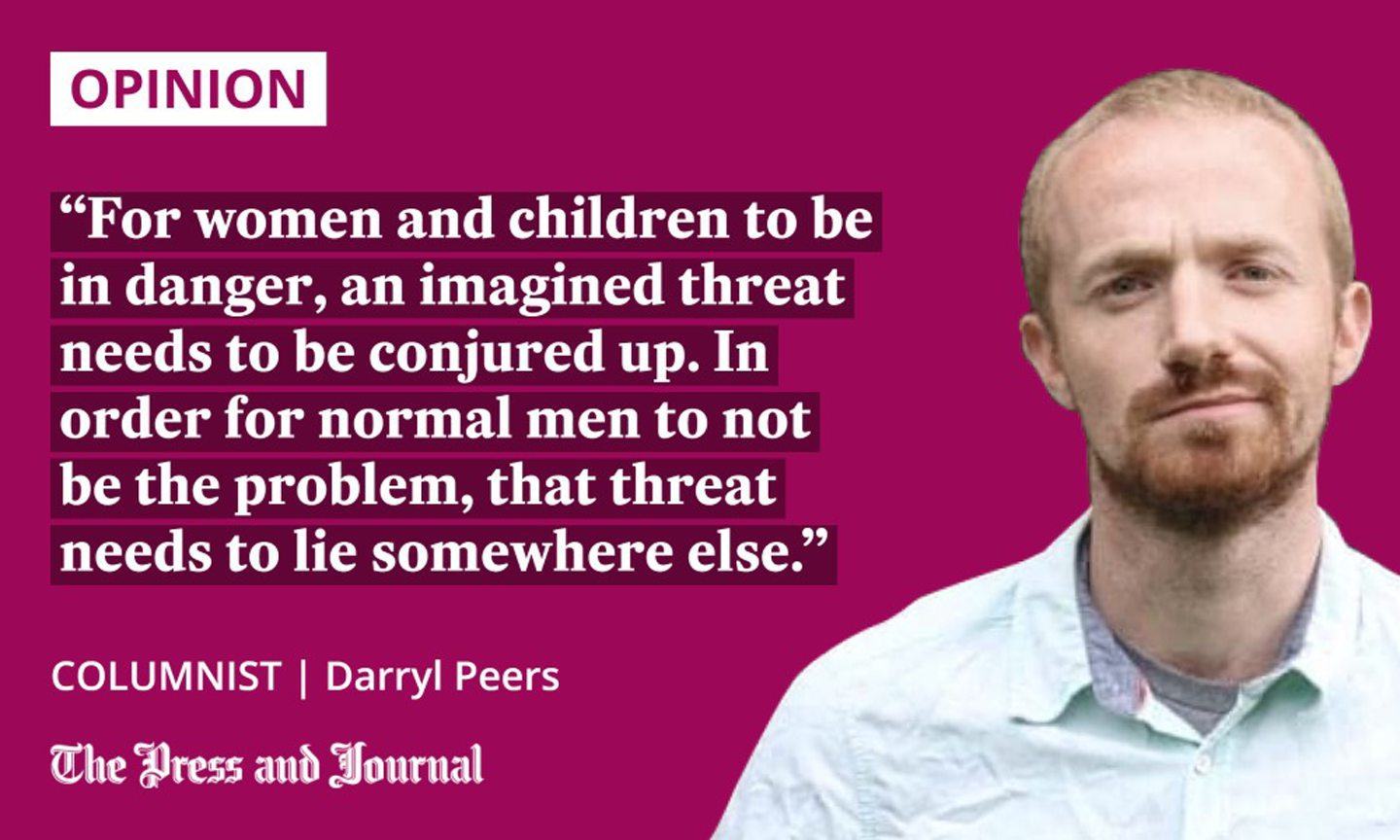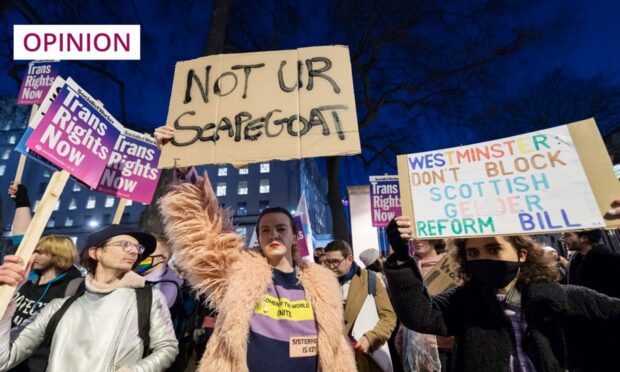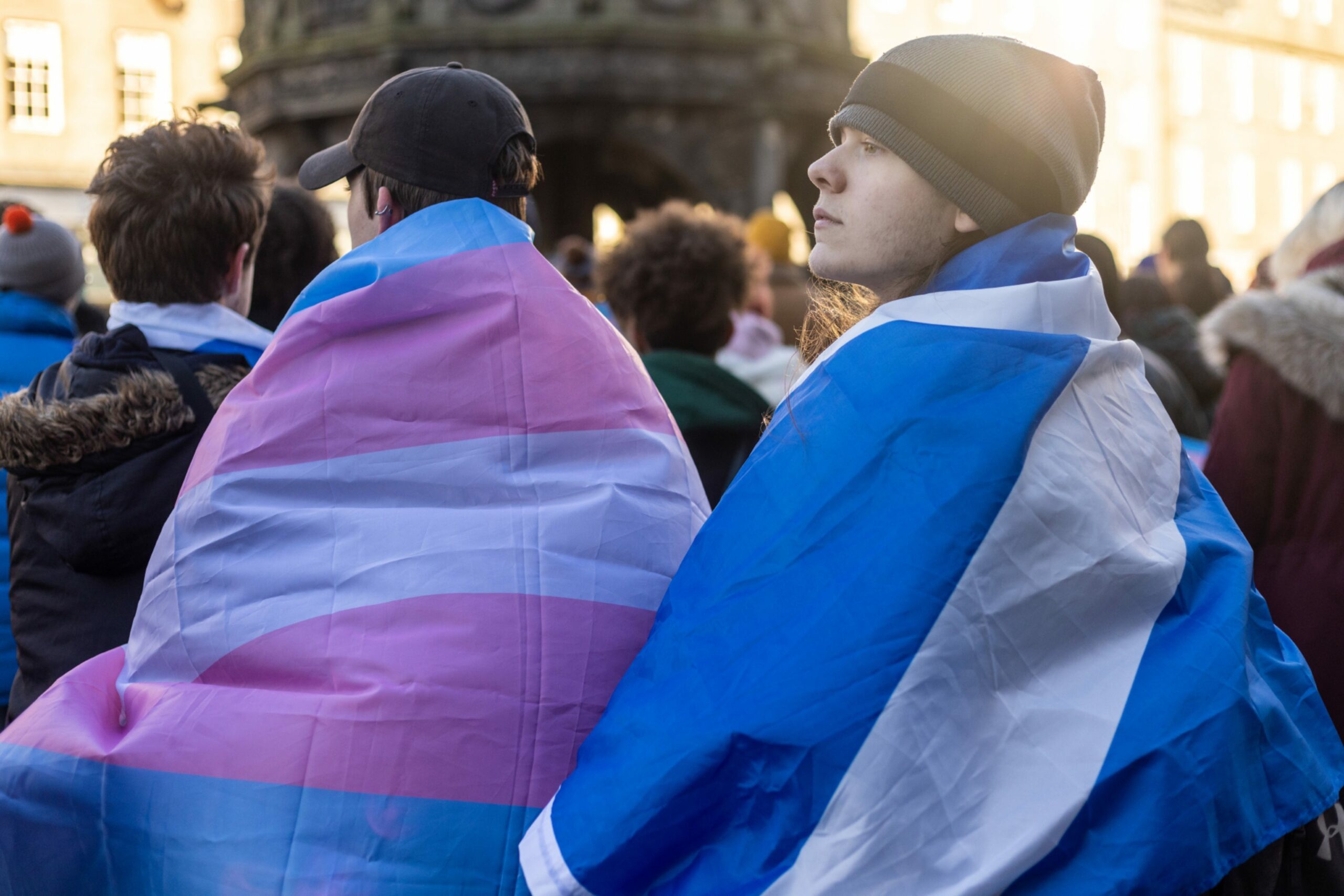Women and trans people have been condescendingly dubbed as protected groups who cannot stop fighting among each other, writes Darryl Peers.
It is important not to conflate the question of gender recognition with that of constitution or devolution. They are separate issues.
On the one hand, the UK Government clearly does not agree with the majority of MSPs concerning what the process should be for gender recognition.
On the other, Nicola Sturgeon has accused Alister Jack of launching a “direct attack on the institution of the Scottish Parliament” by blocking legislation that MSPs have passed.
Of course, these questions feed into one another and cannot be entirely disentangled. However, the everyday life of trans people – their ability to move frictionlessly through the world – is not the frontier on which Scotland’s autonomy should be decided. They are people just trying to get by and be happy.

Trans people are already rendered hypervisible by the fact that they are often looked at as an unusual minority. However, they are only unusual if people seeing themselves as having a normative relationship to sex and gender are arrogant enough to imagine theirs as the “normal” position.
It is easy to feel normal as a cisgender person in contemporary Western society. However, this time and this place is not the only time and not the only place.
Twenty-first century British life has been built on the back of colonialism and slavery. In other words, the way that things are “here today” has been enabled by the systematic destruction of several “over theres” – and the radically different ways of perceiving the world found in them – across centuries of history.
Trans people are not new
What does this have to do with the argument over gender recognition reform? The present is always an extension of the past, and not just the near past, but also those pasts considered distant.
Today’s “normal” in the UK is inextricable from the violent destruction of cultures across history, targeted because the people living in them were viewed, by British slavers and conquerors, as primitive, uncivilised, or unintelligible.
The idea that trans people are “new” suggests that challenges to the male and female binary are also new. But they are not. In many of the cultures that colonial powers brutalised, different conceptions of gender and sexuality were at play.
This is to say that the place we’ve arrived at in the UK today was not inevitable; it is the result of choices that usually powerful people have made. Those choices, whether clearly connected to gender legislation or not, have tended to uphold the idea that trans people are unusual.
It is in light of this history that a trans person must receive a medical diagnosis – effectively admitting they are unwell – in order to receive legal recognition of their transition. Viewing trans lives as somehow in the realm of the medical is a contemporary iteration of difference being othered.
I’m wary of ‘protector’ politicians
When I hear politicians imagining themselves as the protectors of “women and children”, as Alister Jack has done, I am sceptical. This sort of appeal asks the listener to imagine helpless, innocent, and passive individuals who – if not protected by normal men – will be callously subjected to a horrific fate.
Surfacing the violence and exclusion that masquerades under the banner of ‘normal’ is tiring work, and usually falls upon the people subjected to it
For women and children to be in danger, an imagined threat needs to be conjured up. In order for normal men to not be the problem, that threat needs to lie somewhere else. How can the easy relation between men and power have anything to do with the disempowerment of other groups?
Surfacing the violence and exclusion that masquerades under the banner of “normal” is tiring work, and usually falls upon the people subjected to it.
The risk to women and trans people stems from the same source
Men are the risk to women and children. They also present risk to trans and queer people. On Sunday with Laura Kuenssberg, Transport Secretary Mark Harper described women’s and trans rights as “conflicting”. If we accept this premise, the argument sounds irresolvable. But I do not accept it.
The risk to women and trans people stems from the same source. It comes from men. And it is the primacy of the straight, cisgender, white man that continues unquestioned, while women and trans people are condescendingly dubbed as protected groups who cannot stop fighting among each other.
In The Guardian, Martin Kettle described Nicola Sturgeon as having “weaponised gender recognition as part of her showcasing of Scottish progressivism”. This is how condescension and othering works.
A person believes themselves to be reasonable; other kinds of reason or logic that do not correspond with theirs must be branded unreasonable to preserve it. The reasonable person imagines that they can speak with authority about another person’s motives. The reasonable person does not acknowledge that their judgment is nothing more than guesswork.
This kind of “reason” has justified more violence than I can countenance. Better to let people, or perhaps parliaments, speak for themselves.
Darryl Peers is a writer from the north-east of Scotland



Conversation